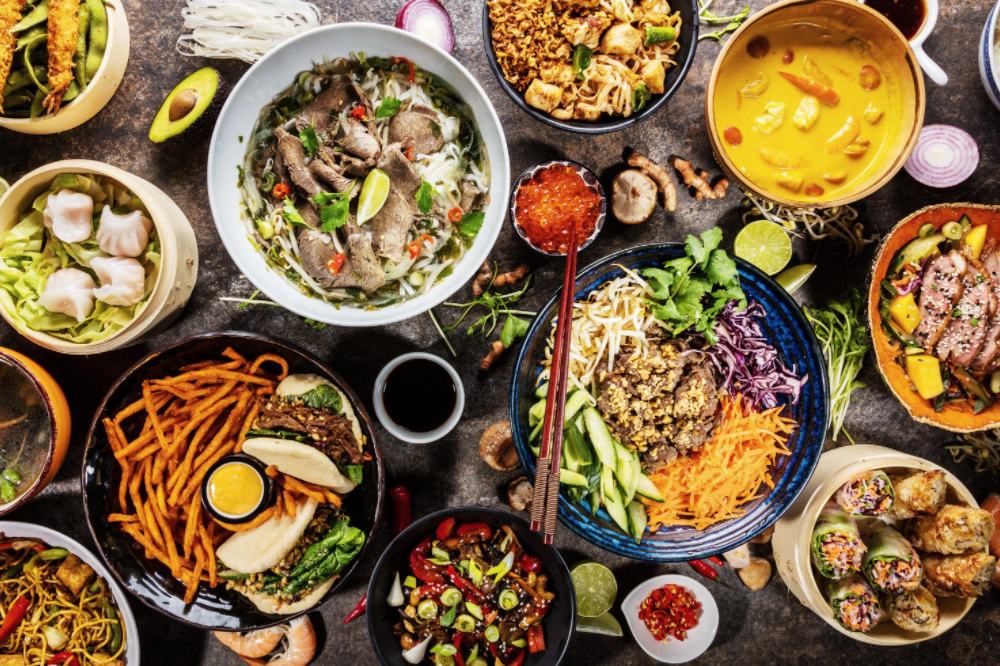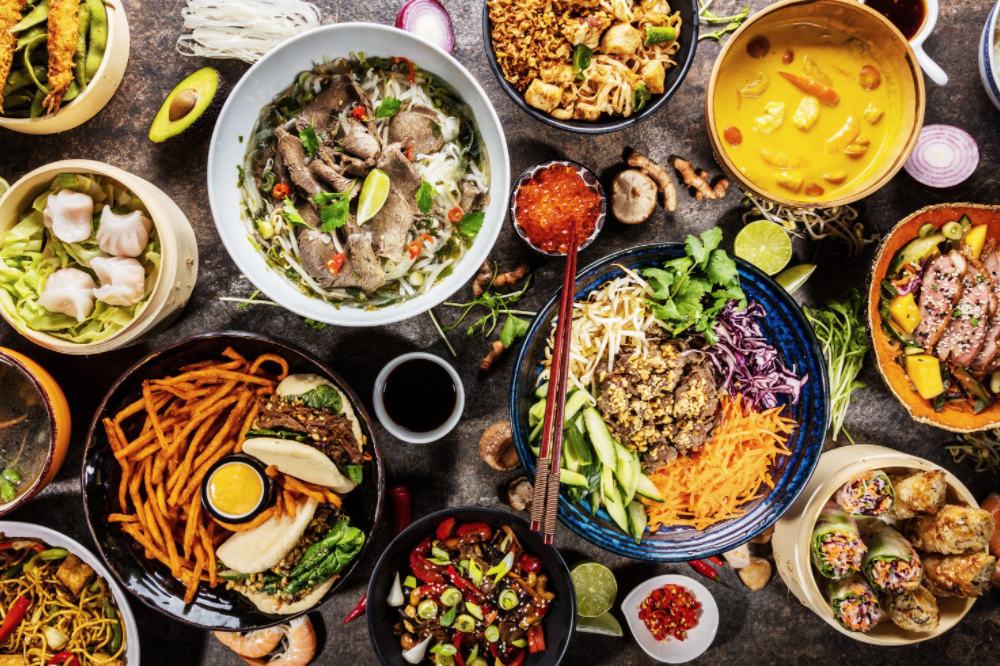Imagine embarking on a culinary journey in Thailand, where you immerse yourself in the vibrant flavors and enticing aromas of Thai cuisine. From the bustling streets of Bangkok to the serene beaches of Phuket, every corner of this mesmerizing country holds a gastronomic surprise waiting to be savored. Whether it’s feasting on spicy Pad Thai by the roadside or indulging in delectable Tom Yum soup in a beachside restaurant, Thailand offers a delightful culinary adventure that will leave your taste buds in a state of pure bliss. So grab your chopsticks and get ready to discover the exquisite world of Thai food, where each bite is a step closer to unraveling the secrets of this fascinating cuisine.
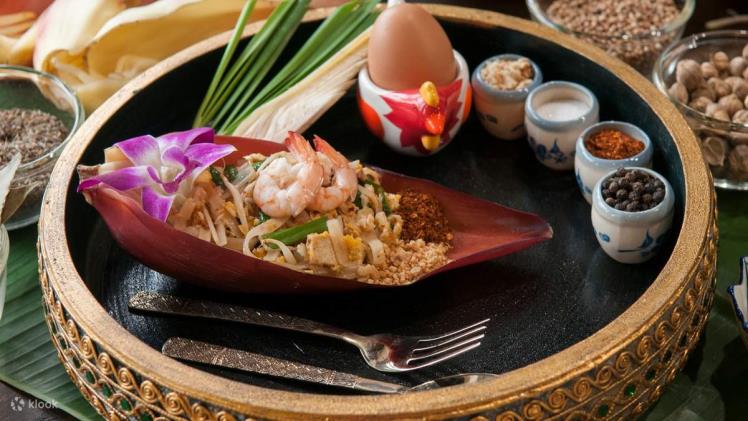
Exploring the Richness of Thai Cuisine
If you’re a food lover, then Thailand is a destination you simply can’t miss. The exquisite Thai cuisine is renowned worldwide for its bold flavors, aromatic spices, and vibrant colors. From traditional dishes to regional specialties and street food delights, Thai cuisine offers a diverse culinary experience that will leave you craving for more. In this article, we will take you on a gastronomic journey through the richness of Thai cuisine, exploring traditional dishes, regional specialties, street food culture, fusion cuisine, key ingredients, cooking techniques, food etiquette, and the intersection of Thai food and cultural tourism.
Traditional Thai Dishes
Thai cuisine is steeped in tradition, and you can’t explore the world of Thai food without starting with the classic dishes. Here are some traditional Thai dishes that you must try:
Pad Thai
Pad Thai is perhaps one of the most famous Thai dishes that has gained international popularity. This stir-fried noodle dish is a harmonious blend of rice noodles, tofu, bean sprouts, shrimp, or chicken, flavored with a combination of tamarind paste, fish sauce, palm sugar, and lime juice. Topped with crushed peanuts, fresh herbs, and a sprinkle of chili flakes, Pad Thai offers a perfect balance of sweet, sour, and savory flavors.
Tom Yum Goong
Another iconic Thai dish, Tom Yum Goong is a hot and sour soup that showcases the quintessential flavors of Thai cuisine. This aromatic soup is made with shrimp, mushrooms, lemongrass, galangal, lime leaves, and chili peppers, creating a tantalizing blend of spicy, tangy, and fragrant notes. The Tom Yum Goong experience is guaranteed to awaken your taste buds and leave you with a memorable culinary sensation.
Gaeng Daeng
Gaeng Daeng, also known as Red Curry, is a popular Thai curry dish that offers a burst of flavors. Made with a paste consisting of red chili peppers, lemongrass, garlic, shallots, galangal, and shrimp paste, Gaeng Daeng is enriched with coconut milk, creating a creamy and spicy base. This vibrant curry is traditionally prepared with beef, chicken, or pork, along with vegetables like bamboo shoots, eggplant, and bell peppers. Served with steamed jasmine rice, Gaeng Daeng is a Thai culinary delight that will leave you craving for more.
Som Tam
Som Tam, also known as Green Papaya Salad, is a refreshing and spicy salad that perfectly encapsulates the vibrant flavors of Thai cuisine. This dish is made by pounding green papaya, cherry tomatoes, garlic, chili peppers, and peanuts in a mortar and pestle, and then tossing them with palm sugar, fish sauce, lime juice, and tamarind pulp. The result is a flavorful and textured salad that bursts with sweet, sour, and spicy notes. Som Tam is commonly enjoyed as a side dish or a light meal, and it’s a favorite among locals and visitors alike.
Green Curry
Green Curry, or Gaeng Keow Wan, is a staple in Thai cuisine and a must-try dish for curry lovers. This curry gets its vibrant green color from a blend of green chili peppers, curry paste, and fresh herbs such as basil and cilantro. The curry is made by simmering the paste with coconut milk and adding protein such as chicken, beef, or tofu, along with vegetables like Thai eggplant and green beans. The result is a rich, aromatic, and creamy curry that pairs perfectly with steamed rice.
Regional Specialties
Thailand’s culinary landscape is incredibly diverse, with each region showcasing its unique specialties and flavor profiles. Let’s take a journey through Thailand and discover some regional specialties:
Northern Cuisine: Khao Soi
Northern Thai cuisine is known for its distinctive flavors and influences from neighboring countries like Myanmar and China. One of the standout dishes from this region is Khao Soi, a rich and fragrant curry noodle soup. Khao Soi features a combination of crispy egg noodles and soft egg noodles, tender chicken or beef, shallots, pickled mustard greens, lime, and a dollop of rich curry sauce. This delightful dish offers a blend of creamy, spicy, and tangy flavors, providing a true taste of Northern Thailand.
Southern Cuisine: Massaman Curry
The cuisine of Southern Thailand is characterized by bold and intense flavors, influenced by the region’s proximity to Malaysia and Indonesia. A must-try dish from this region is Massaman Curry, which is heavily influenced by Indian cuisine. Massaman Curry is a slow-cooked curry made with a thick and fragrant paste consisting of dried spices such as cinnamon, cardamom, star anise, and cloves. It is typically prepared with beef or chicken, combined with potatoes, onions, and roasted peanuts, resulting in a hearty and flavorful curry that is subtly spiced and wonderfully aromatic.
Central Cuisine: Phat Kaphrao
Central Thailand takes pride in its vibrant street food culture and the bold flavors found in dishes like Phat Kaphrao. This stir-fried dish features minced meat (usually pork or chicken) cooked with garlic, Thai chili peppers, and aromatic holy basil leaves. It is served over steamed rice and often topped with a fried egg. Phat Kaphrao is a quick, satisfying, and flavorful option that offers a tantalizing blend of heat, fragrant herbs, and meaty goodness.
Northeastern (Isan) Cuisine: Larb
Isan cuisine originates from the Northeastern part of Thailand and has a distinct style that sets it apart from other regions. A signature dish from this region is Larb, a spicy and tangy salad made with minced meat (commonly pork or chicken) cooked with lime juice, fish sauce, chili peppers, roasted ground rice, and fresh herbs like mint and cilantro. Larb is famous for its bold flavors, with the tangy lime juice perfectly balancing the spiciness of the chili peppers. It is typically eaten with sticky rice and is a staple at festive gatherings and traditional events.
Street Food Culture
Thailand is rightly famous for its vibrant street food culture, where you can discover some of the most delicious and authentic Thai dishes. Here are some of the top destinations in Thailand to embark on a street food adventure:
Bangkok’s Bustling Street Food Scene
Bangkok undoubtedly stands out as a street food paradise, offering an endless array of culinary delights in its bustling markets and colorful streets. The city is dotted with food stalls that serve up tantalizing dishes such as grilled satay skewers, savory Pad Thai, aromatic grilled meats and seafood, steaming bowls of noodles, and fragrant coconut desserts. Sitting on a plastic stool, surrounded by the energetic vibe and savoring the incredible flavors of Bangkok’s street food, is an experience you won’t soon forget.
Chiang Mai’s Night Bazaar Delights
Chiang Mai, in Northern Thailand, is another city renowned for its street food scene. One of the best places to explore the local cuisine is at the bustling Chiang Mai Night Bazaar. As you stroll through the vibrant market, you’ll come across a wide range of food stalls offering everything from fiery curries and tangy soups to succulent grilled meats and aromatic stir-fries. Don’t miss the opportunity to try Khao Soi, a local specialty that originated in Chiang Mai and is widely celebrated for its unique flavors.
Phuket’s Off-the-Beaten-Path Food Stalls
While Phuket is often associated with stunning beaches and crystal-clear waters, it also offers a distinctive street food scene that is worth exploring. Venture away from the tourist hotspots and you’ll discover hidden gems – local food stalls serving up authentic Thai cuisine. From fresh seafood prepared with local spices and herbs to fiery green curries, tangy papaya salads, and sweet mango sticky rice, Phuket’s street food scene has something to satisfy everyone’s taste buds. This is the perfect opportunity to delve into the flavors of Thai cuisine and experience the local food culture firsthand.
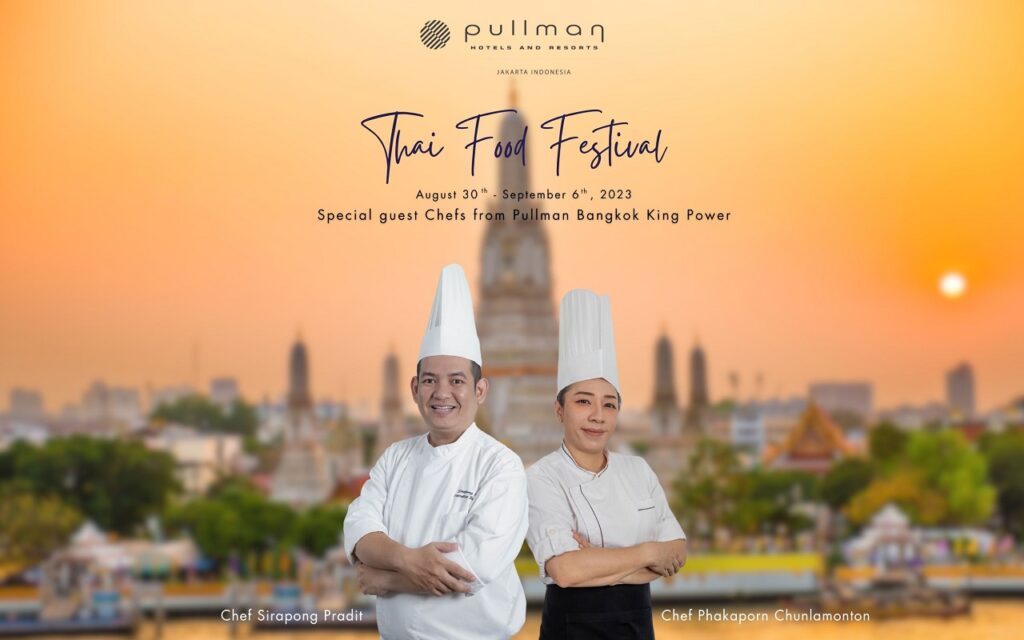
Fusion Cuisine
As Thailand embraces modern influences and global culinary trends, the country has also developed its own distinct fusion cuisine. Here are some notable examples of fusion dishes in Thailand:
Influence of Chinese Cuisine
Thailand’s close proximity to China has resulted in a significant influence on its cuisine. Chinese-inspired dishes such as Crispy Pork Belly Stir-Fry, Hainanese Chicken Rice, and Sweet and Sour Fish have become popular in Thai culinary repertoire. These dishes often incorporate Thai flavors and spices, resulting in unique fusion creations that cater to both local and international palates.
Western Influences
With the rise of tourism, Western influences have made their way into Thai cuisine, resulting in fusion dishes that combine Thai and Western flavors. Thai-style burgers, pizza with Thai toppings, and pasta dishes infused with Thai spices have gained popularity among locals and tourists looking for a unique dining experience.
Japanese and Korean Fusion
The love for Japanese and Korean cuisines has also influenced Thai culinary innovations. Thai-style sushi rolls, Korean-inspired barbecued meats, and fusion dishes like Kimchi Pad Thai showcase the creative fusion of flavors from different cultures, catering to the diverse tastes of locals and visitors alike.
Vegan and Vegetarian Options
As the world becomes more conscious about dietary choices, Thailand has embraced the demand for vegan and vegetarian cuisine, resulting in plant-based fusion dishes. Thai-style vegan curries, tofu stir-fries, and vegetable-based Pad Thai are just some examples of the delicious and wholesome options available for those with dietary restrictions or preferences.
Thai Ingredients and Cooking Techniques
To truly understand and appreciate Thai cuisine, it’s important to explore the key ingredients and cooking techniques that give Thai dishes their unique flavor profiles. Let’s delve into the secrets behind Thai cooking:
Key Ingredients in Thai Cuisine
Thai cuisine relies on a variety of herbs, spices, and condiments to create its distinct flavors. Some key ingredients include:
- Galangal: A root similar to ginger, galangal adds a citrusy and slightly spicy flavor to Thai dishes.
- Kaffir Lime Leaves: These aromatic leaves are commonly used in Thai cuisine to infuse flavors into dishes like curries and soups.
- Fish Sauce: Made from fermented fish, fish sauce is a fundamental ingredient in Thai cooking, adding a savory umami taste to dishes.
- Coconut Milk: The creamy and rich flavor of coconut milk is commonly used in curries and desserts, providing a lush and velvety texture.
Balancing Flavors in Thai Cooking
Thai cuisine is known for its harmonious balance of flavors – sweet, sour, salty, and spicy. Achieving this balance is an art form in Thai cooking, and it often involves the delicate interplay of key ingredients like palm sugar, lime juice, chili peppers, and fish sauce. The sweetness of palm sugar complements the tangy sourness of lime juice, while the heat from chili peppers adds an extra dimension of spiciness. The art of balancing flavors is what truly makes Thai cuisine unique and incredibly satisfying.
Staple Cooking Techniques
Thai cuisine employs a variety of cooking techniques, each adding its own charm and distinct flavors to the dishes. Some staple cooking techniques in Thai cuisine include:
- Stir-Frying and Deep-Frying: These techniques are widely used to lock in flavors, create crisp textures, and cook ingredients quickly over high heat.
- Grilling and Barbecuing: Grilling and barbecuing infuse dishes with smoky flavors and impart a tantalizing charred taste to meats and vegetables.
- Boiling and Steaming: These techniques are used to extract flavors and retain the natural goodness of ingredients, resulting in soups and light dishes.
- Curry Paste Preparation: Making curry pastes from scratch is a traditional Thai technique that involves pounding fresh herbs, spices, and other flavorings to create a robust base for curries.
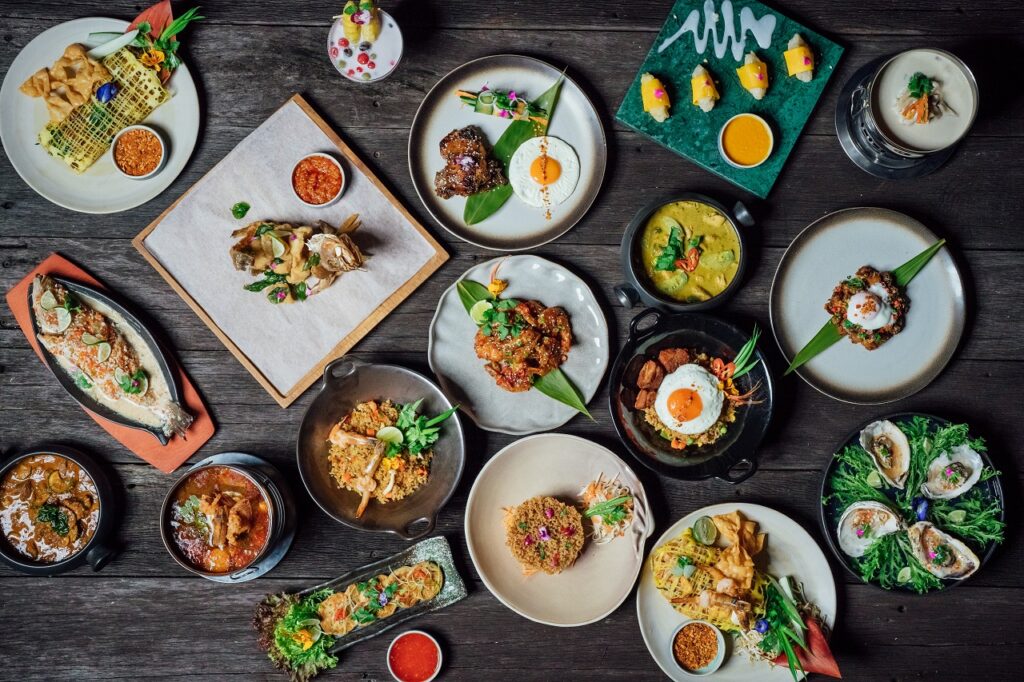
Thai Food Etiquette and Dining Customs
Thai food is not just about the flavors; it is also deeply ingrained in Thai culture and traditions. Understanding Thai food etiquette and dining customs will enhance your culinary experience in Thailand. Here are some key points to keep in mind:
The Importance of Sharing
Thai meals are often shared among a group of people, and the concept of communal dining is integral to Thai food culture. It is customary to order several dishes and have them placed in the center of the table, allowing everyone to help themselves and try a variety of flavors. This spirit of sharing fosters a sense of togetherness and camaraderie.
Eating with Chopsticks and Spoons
While chopsticks are commonly used in other Asian cuisines, Thai food is traditionally eaten with a spoon and fork. The fork is used to push food onto the spoon, which then goes into the mouth. Chopsticks may be provided for certain dishes, especially noodles, but they are not used for rice or most other Thai dishes.
Eating with Hands: Sticky Rice and Som Tam
In certain regions of Thailand, it is common to eat sticky rice with your hands. Sticky rice is rolled into small balls or used to scoop up other dishes. Additionally, the popular dish Som Tam (Green Papaya Salad), is often enjoyed by eating with your hands. The combination of spicy, tangy flavors with the texture of the shredded papaya creates a unique and enjoyable dining experience.
Respecting the Royal Cuisine
Thai cuisine has a long history of royal influence, and the food served in the Royal Court is considered a pinnacle of Thai culinary art. When dining in Thailand, it is important to show respect for this tradition. Certain dishes that are associated with the Royal Court may be prepared and presented with special care, so take the time to appreciate the craftsmanship and attention to detail that goes into the preparation of these dishes.
Thai Food and Cultural Tourism
Thai cuisine has become much more than just a local delight; it has become a focal point for cultural tourism as well. Travelers now have the opportunity to engage in culinary tours, cooking classes, and explore food markets to immerse themselves in the world of Thai food. Here are some popular ways to experience Thai food and cultural tourism:
Culinary Tours and Cooking Classes
Culinary tours offer a comprehensive exploration of Thai food, taking you to local markets, street food stalls, and popular restaurants to sample a wide variety of traditional and modern dishes. These tours often include hands-on cooking classes where you can learn to prepare Thai dishes under the guidance of experienced chefs, allowing you to take a piece of Thai culinary heritage back home with you.
Food Markets and Floating Markets
Food markets offer a vibrant snapshot of Thai food culture, giving you the opportunity to taste fresh produce, local delicacies, and street food right from the source. The lively atmosphere, enticing aromas, and colorful displays make food markets a sensory wonderland. Floating markets, such as the famous Damnoen Saduak in Bangkok, offer a unique and picturesque experience where vendors sell their goods from traditional boats, allowing you to purchase fresh fruits, vegetables, and hot dishes without even stepping foot on land.
Participating in Traditional Festivals
Traditional Thai festivals provide the perfect opportunity to immerse yourself in Thai culture and experience the rich tapestry of flavors that Thai cuisine has to offer. Festivals like Songkran (Thai New Year), Loy Krathong (Festival of Lights), or the Vegetarian Festival are celebrated with full culinary fervor, with vibrant food stalls offering traditional dishes, sweets, and delicacies that are specific to each festival. These celebrations are not only an ode to Thai food but also a celebration of the country’s heritage and traditions.
In conclusion, exploring the richness of Thai cuisine is a culinary journey that will take you through a world of vibrant flavors, aromatic spices, and diverse regional specialties. From the iconic Pad Thai to the tantalizing Tom Yum Goong and from the bustling street food scenes of Bangkok and Chiang Mai to the fusion creations influenced by global culinary trends, Thai cuisine offers a delightful gastronomic experience for everyone. So, grab a spoon, dive into a plate of Pad Thai, and let the flavors of Thailand transport you to a culinary paradise you won’t soon forget.
